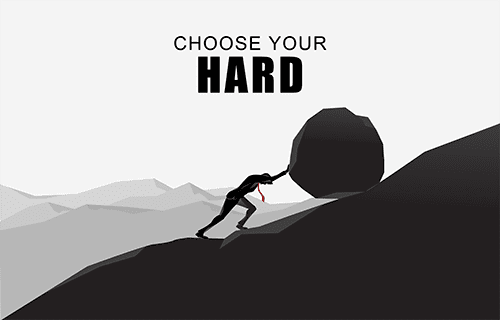It’s hard to run a poorly managed appraisal department.
It’s hard to run an efficient appraisal department.
It’s hard to run a poorly managed appraisal operation and it’s equally hard to run a well-organized one.
The question is: which hard do you want to live with?
We don’t always choose what will help us win-we often choose what will help us avoid loss.
This same principle plays out in the choices faced by those running appraisal departments. You’re not choosing between “hard” and “easy”- you’re choosing between two different kinds of hard.
We Don’t Choose to Win-We Choose to Avoid Loss
First, consider the poorly run appraisal department. The path to inefficiency often starts with small decisions. Deadlines get missed, staff turnover increases and customer satisfaction drops.
What began as small oversights snowballs into a system where no one is clear about their role and the department operates in a state of constant reaction rather than proactive management.
The loss here is multifaceted: lost revenue, eroding client trust and a team that’s frustrated and overwhelmed. It’s a dumpster fire that never stops burning and it’s exhausting to maintain.
Even a Well-Oiled Machine Can Squeak
On the other hand, running a well-organized appraisal department comes with its own challenges. There’s the upfront work of implementing systems, like YouConnect, to streamline operations, track performance and ensure compliance. It requires training, leadership buy-in and patience.
It will take for your team time to fully embrace Glances-a seamless integration platform that connects siloed banking systems, reduces manual entry errors and double entry improving compliance.
Inefficiency Begins with Small Decisions
You’re no longer just managing tasks-you’re managing processes. It’s difficult because improvement is slow.
The rewards of efficiency and client satisfaction don’t come immediately. But over time, this version of hard pays dividends in stability, predictability and growth.
In both cases, you’re facing hard decisions. One leads to short-term avoidance and long-term stress; the other demands short-term effort but delivers long-term sustainability.
The Devil You Know is Still a Devil
Tversky and Kahneman’s theory of loss aversion reminds us that we often choose the devil we know because it feels like a smaller loss in the moment.
But avoiding the hard work of building something well-run doesn’t eliminate the difficulty-it just delays and magnifies it.
So, the choice is not between “easy” and “hard.” The choice is which type of hard you’re willing to live with.
One path builds resilience; the other perpetuates chaos.
Choose wisely.
Choose your hard.





